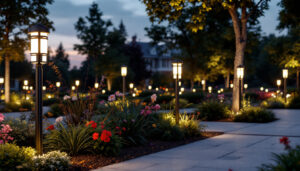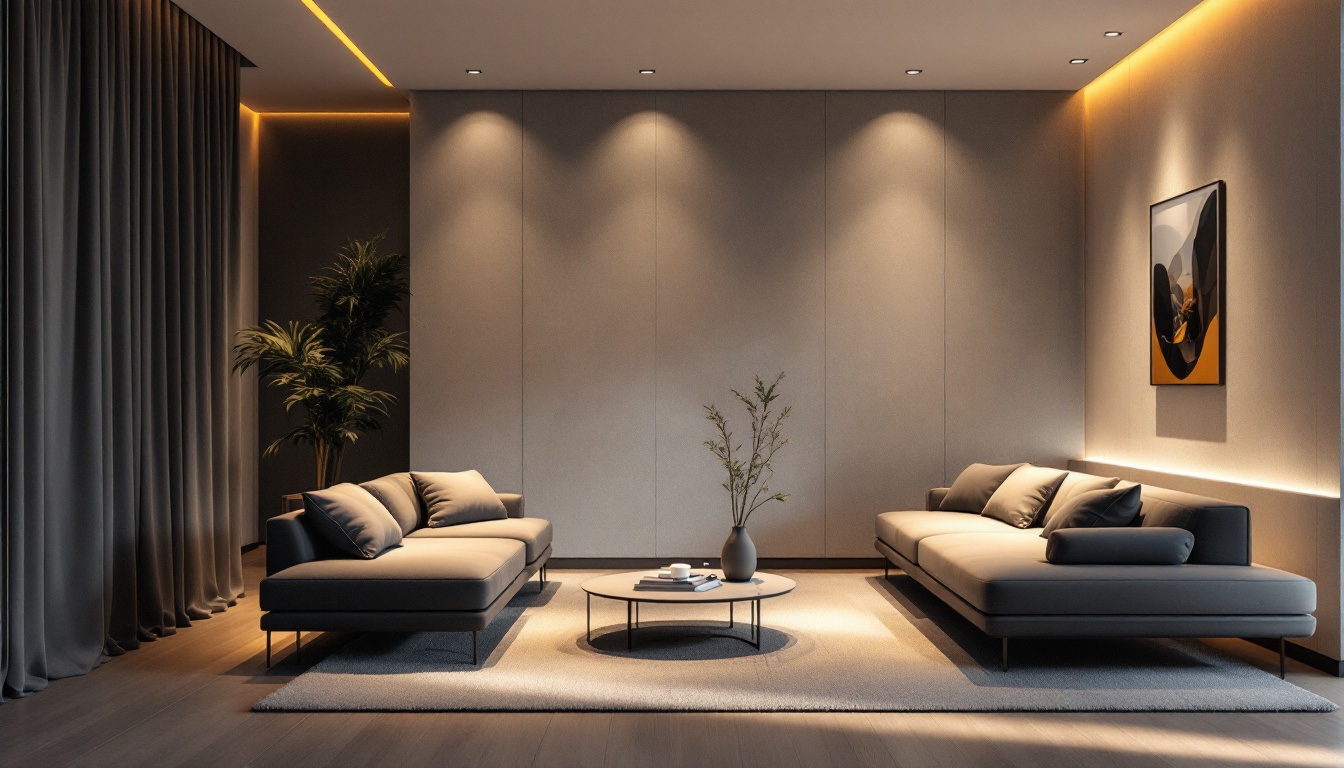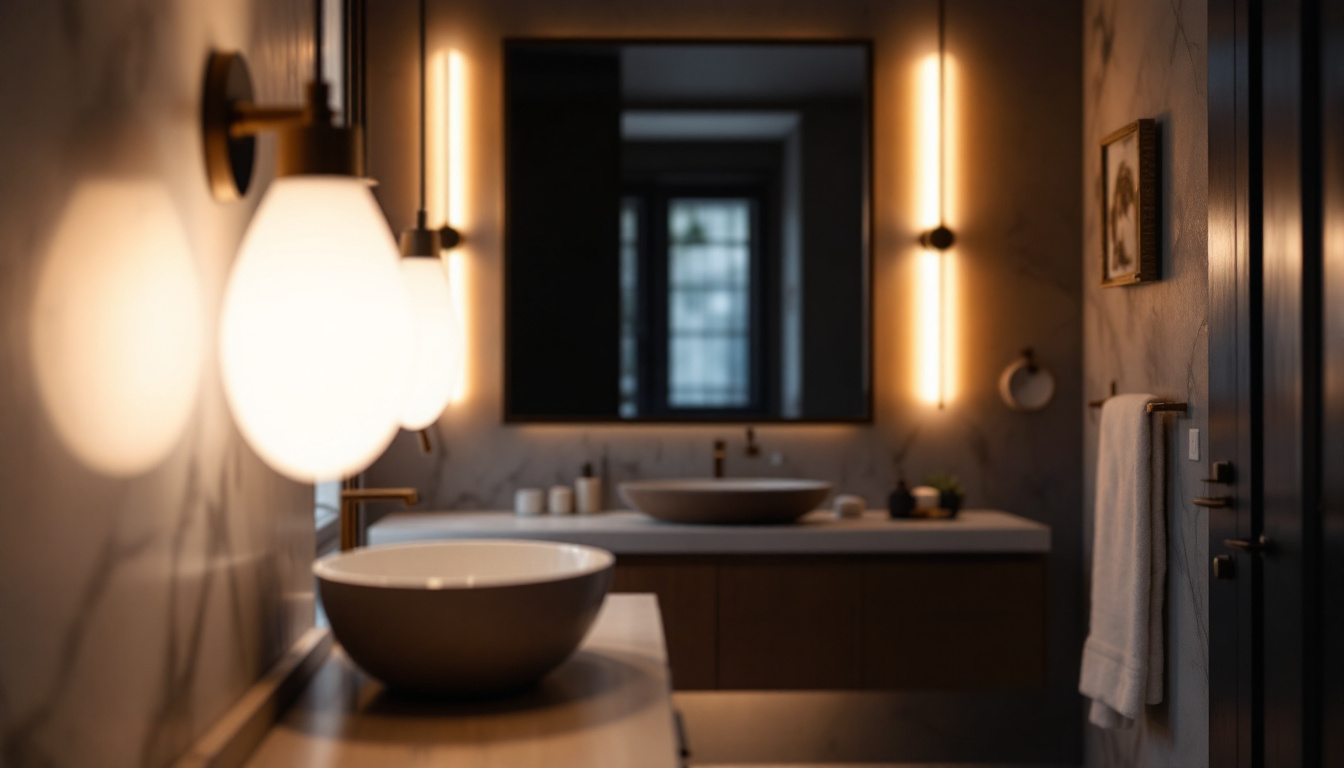

In the realm of modern interior design, lighting plays a crucial role in creating ambiance, enhancing aesthetics, and promoting energy efficiency. Among various lighting solutions, plastered in angled recessed lighting has emerged as a popular choice for both residential and commercial spaces. This article delves into the impact of this innovative lighting technique on energy efficiency, exploring its benefits, installation considerations, and overall effectiveness.
Angled recessed lighting, often referred to as “can lights” or “downlights,” is a type of lighting fixture that is installed into the ceiling at an angle. This design allows for targeted illumination, making it ideal for highlighting specific areas or features within a room. The plastered finish provides a seamless look, blending the fixtures with the ceiling and contributing to a clean aesthetic.
One of the primary advantages of angled recessed lighting is its versatility in design. It can be used in various settings, from residential homes to commercial spaces, adapting to different architectural styles. Whether illuminating artwork, accentuating architectural details, or providing general lighting, this type of fixture can be strategically placed to enhance the overall design.
Moreover, the ability to adjust the angle of the light allows for creative lighting solutions. Designers can direct light where it is needed most, creating focal points and enhancing the visual appeal of a space. This adaptability contributes to the growing popularity of angled recessed lighting among contractors and designers alike. For instance, in a gallery setting, angled recessed lights can be positioned to highlight individual pieces of art, drawing the viewer’s eye and creating a dynamic viewing experience. In residential spaces, they can be used to illuminate a cozy reading nook or a stylish kitchen island, making the environment feel more inviting and functional.
Energy efficiency is a significant consideration in today’s lighting solutions. Angled recessed lighting can contribute to reduced energy consumption in several ways. First, many modern recessed fixtures utilize LED technology, which is known for its low energy usage compared to traditional incandescent or fluorescent bulbs. LEDs consume significantly less power while providing the same, if not better, light output.
Additionally, the strategic placement of angled recessed lights can minimize the need for additional lighting sources. By effectively illuminating specific areas, these fixtures can reduce the reliance on overhead lighting, further lowering energy consumption. This targeted approach not only enhances energy efficiency but also creates a more inviting atmosphere. Furthermore, many LED recessed lights come with dimming capabilities, allowing users to adjust the brightness according to their needs and preferences. This feature not only extends the lifespan of the bulbs but also offers the flexibility to create different moods within a space, from bright and energizing to soft and relaxing. As energy costs continue to rise, the long-term savings associated with installing angled recessed lighting make it an increasingly attractive option for both homeowners and business owners alike.
While the benefits of plastered in angled recessed lighting are clear, proper installation is crucial to achieving optimal results. Lighting contractors must consider several factors to ensure a successful installation that maximizes energy efficiency.
Selecting the appropriate fixtures is the first step in the installation process. Contractors should consider the lumen output, color temperature, and beam angle of the recessed lights. A higher lumen output is essential for spaces that require more illumination, while the color temperature can affect the mood of the environment. Warmer tones create a cozy atmosphere, while cooler tones can enhance productivity in workspaces.
Moreover, the beam angle plays a critical role in how light is distributed within a room. A narrow beam angle is ideal for highlighting specific features, while a wider beam angle can provide general illumination. Understanding these specifications will help contractors choose fixtures that align with the client’s needs and the intended use of the space.
The placement of angled recessed lighting is equally important. Proper spacing between fixtures ensures even light distribution and reduces the risk of dark spots. A common rule of thumb is to place fixtures approximately 4 to 6 feet apart, depending on the height of the ceiling and the desired light intensity.
Additionally, contractors should consider the height of the ceiling when determining the angle of the fixtures. For higher ceilings, a steeper angle may be necessary to ensure adequate illumination. Conversely, lower ceilings may require a shallower angle to prevent the light from being too harsh or overwhelming.
The impact of plastered in angled recessed lighting on energy consumption can be significant, particularly when compared to traditional lighting solutions. By utilizing LED technology and strategic placement, these fixtures can lead to substantial energy savings over time.
While the initial investment in LED recessed lighting may be higher than traditional options, the long-term savings are undeniable. LEDs have a longer lifespan, often lasting up to 25,000 hours or more, which reduces the frequency of replacements. This longevity translates to lower maintenance costs and less waste, contributing to a more sustainable approach to lighting.
Furthermore, the energy savings associated with LED fixtures can lead to lower utility bills. As energy prices continue to rise, the financial benefits of energy-efficient lighting become increasingly apparent. Homeowners and businesses alike can enjoy significant savings while also reducing their carbon footprint.
In addition to financial savings, the environmental impact of energy-efficient lighting cannot be overlooked. By reducing energy consumption, plastered in angled recessed lighting contributes to lower greenhouse gas emissions. This shift towards more sustainable lighting solutions aligns with global efforts to combat climate change and promote environmental stewardship.
Moreover, the reduced waste associated with longer-lasting LED fixtures further enhances their eco-friendliness. As lighting contractors, promoting energy-efficient solutions not only benefits clients but also supports a broader commitment to sustainability.
The impact of plastered in angled recessed lighting extends beyond energy efficiency; it also significantly enhances the user experience within a space. The right lighting can transform an environment, influencing mood, productivity, and overall satisfaction.
Lighting plays a pivotal role in setting the ambiance of a room. Angled recessed lighting allows for the creation of layered lighting effects, combining ambient, task, and accent lighting. This versatility enables contractors to design spaces that are not only functional but also inviting and aesthetically pleasing.
For instance, in a living room, angled recessed lights can be used to highlight artwork or architectural features while providing general illumination. In a commercial setting, such as an office, the ability to adjust lighting angles can enhance focus and productivity, creating a more conducive work environment.
Visual comfort is another critical aspect of lighting design. Harsh or poorly placed lighting can lead to eye strain and discomfort. Angled recessed lighting, when installed correctly, minimizes glare and shadows, promoting a more comfortable visual experience.
Furthermore, the ability to control the intensity and direction of the light allows users to customize their environment according to their preferences. Dimming options can create a softer atmosphere for relaxation or brighter settings for tasks that require concentration.
The landscape of lighting technology is continually evolving, with new trends emerging that further enhance energy efficiency and user experience. As lighting contractors, staying informed about these trends is essential for providing clients with the best solutions.
One of the most notable trends in lighting is the integration of smart technology. Smart lighting systems allow users to control their lighting remotely through smartphones or voice-activated devices. This level of control not only enhances convenience but also promotes energy efficiency by enabling users to turn off lights when not in use or adjust brightness levels based on the time of day.
Incorporating smart technology into plastered in angled recessed lighting can further optimize energy consumption. For instance, motion sensors can automatically turn lights on or off based on occupancy, ensuring that energy is not wasted in unoccupied spaces.
As LED technology continues to advance, the efficiency and performance of recessed lighting fixtures will only improve. New developments may lead to even lower energy consumption, enhanced color rendering, and improved dimming capabilities. Staying abreast of these advancements will enable contractors to offer the latest and most efficient lighting solutions to their clients.
Moreover, the growing emphasis on sustainable practices in manufacturing will likely lead to more eco-friendly materials and processes, further enhancing the appeal of energy-efficient lighting options.
Plastered in angled recessed lighting presents a compelling solution for enhancing energy efficiency in both residential and commercial spaces. Its design versatility, energy-saving benefits, and positive impact on user experience make it an attractive choice for lighting contractors and their clients.
By understanding the intricacies of installation, the importance of proper fixture selection, and the potential for future advancements, contractors can effectively leverage this lighting solution to meet the evolving needs of their clients. As the industry continues to shift towards more sustainable practices, embracing energy-efficient lighting solutions is not only a smart business decision but also a commitment to a greener future.
In a world increasingly focused on sustainability, plastered in angled recessed lighting stands out as a beacon of innovation, efficiency, and design excellence. By integrating these fixtures into projects, contractors can help shape spaces that are not only beautiful but also environmentally responsible, paving the way for a brighter, more energy-efficient future.
Ready to elevate your lighting projects while maximizing energy efficiency and cost savings? Look no further than LumenWholesale for your plastered in angled recessed lighting needs. Our spec-grade lighting products are designed to meet the highest industry standards, ensuring you deliver top-notch results to your clients. With unbeatable wholesale prices and the convenience of free shipping on bulk orders, you can trust LumenWholesale to provide premium lighting solutions that blend quality with affordability. Don’t let inflated markups dim your project’s potential. Choose LumenWholesale for Wholesale Lighting at the Best Value and light up your space with confidence and style.

Discover the essential insights lighting contractors need to know about vanity lights.

Discover the essential insights lighting contractors need to know about sconce lights.

Discover the ultimate guide for lighting professionals with our essential checklist for buying light bulbs.

Discover the essential guide to waterproof wire connectors tailored for lighting contractors.
Get notified when NEW deals are released.
Optimize your budget with wholesale discounts.
Only top-quality, specification-grade lighting products.
No additional costs at checkout - what you see is what you pay.
We understand the unique needs of contractors.